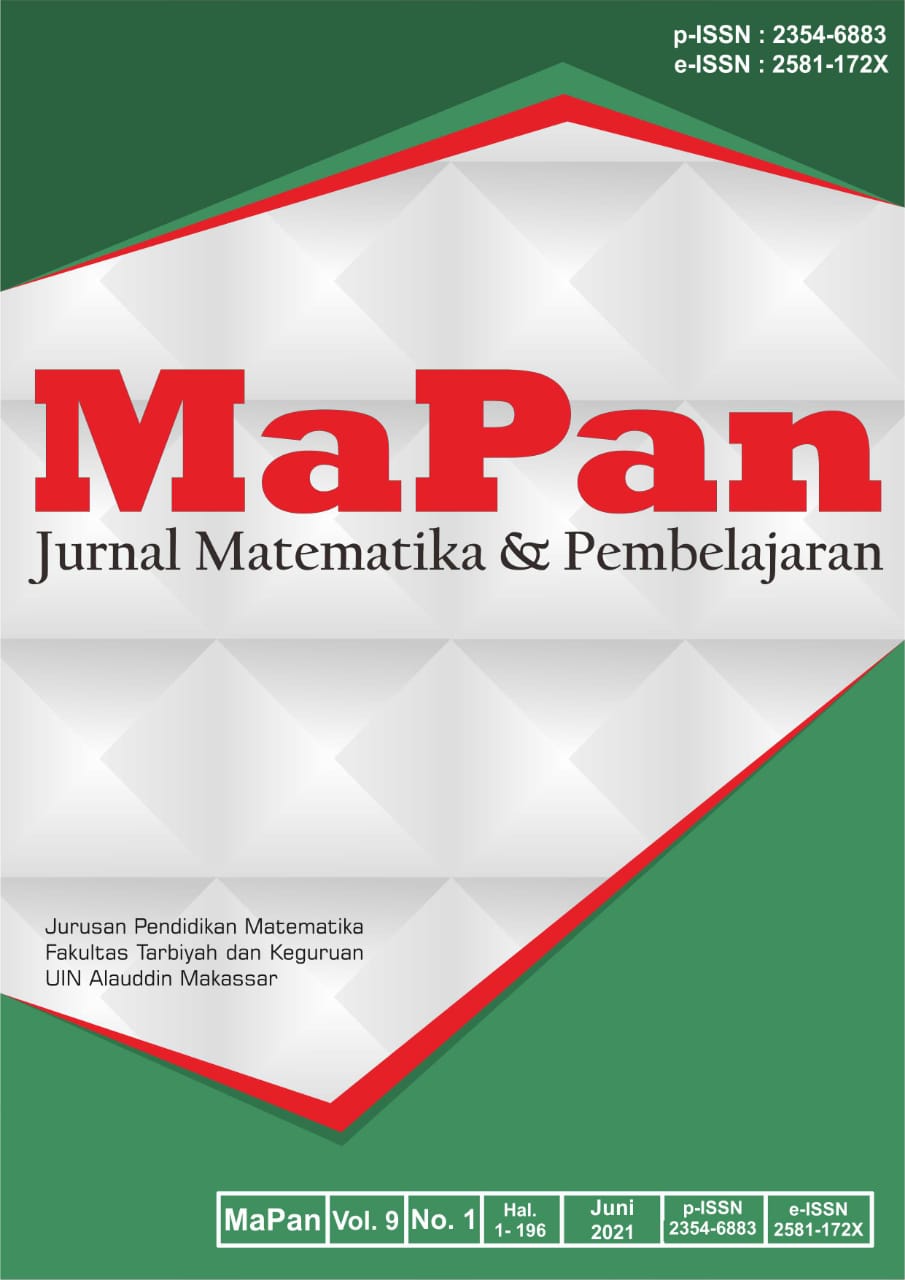THE IMPLEMENTATION OF USING QUIZIZZ AND G-FORM DURING THE COVID-19 PANDEMIC BASED ON STUDENTS’ ATTITUDE
Abstract
This study aims to evaluate the effectiveness of Quizizz and G-Form media based on students' attitudes in learning mathematics. This study used an experimental method with a two-way analysis of variance (ANOVA) technique and Tukey's test. The population is SMAN 3 Sidoarjo grade XI aged 15-17 years as many as 130 students, while the sample is 64 students. Data collection was carried out using test and questionnaire techniques. The results showed that: (a) the mathematics learning outcomes of students who used the G-Form media were higher than those taught using the Quizizz media, (b) there is an interaction between learning media and learning attitudes towards students' mathematics learning outcomes, (c) for students who have positive learning attitudes, there is no significant difference in mathematics learning outcomes of students using G-Form and Quizizz media, and (d) for students who have negative learning attitudes, there are differences in the mathematics learning outcomes of students taught by the G-Form and Quizizz media. We suggest exploring deeper into this media using material that is more authentic to students.
Downloads
References
Agustina, M. R., Suraida, Alfian, & Syefrinando, B. (2018). Authentic assessment analysis based on the curriculum 2013 at SMP negeri 7 Muaro Jambi. Biodik: Jurnal Ilmiah Pendidikan Biologi, 4(2), 135–44. https://doi.org/10.22437/bio.v4i2.6127.
Ardiansyah, M. (2020). Analisis penggunaan media pembelajaran google form untuk meningkatkan minat dan hasil belajar matematika peserta didik Kelas X multimedia di SMK Islam Perti Jakarta. Jurnal Pendidikan MIPA, 10(2). https://doi.org/10.37630/jpm.v10i2.339.
Azevedo, R., Harley, J., Trevors, G., Duffy, M., Feyzi-Behnagh, R., Bouchet, F., & Landis, R. (2013). Using trace data to examine the complex roles of cognitive, metacognitive, and emotional self-regulatory processes during learning with multi-agent systems. International Handbook of Metacognition and Learning Technologies, 28, 427–429. https://doi.org/10.1007/978-1-4419-5546-3_28.
Baharin, R., Aji, R. H. S., Yussof, I., & Saukani, N. M. (2019). Impact of human resource investment on labor productivity in Indonesia. Iranian Journal of Management Studies. https://doi.org/10.22059/ijms.2019.280284.673616.
Bandura. (1994). Self-efficacy defined. Retrieved from https://www.uky.edu/~eushe2/Bandura/BanEncy.html.
Bandura, A. (2006). Guide for constructing self-efficacy scales.
Connell, M. L. (1988). What counts in mathematical evaluation? https://doi.org/10.13140/RG.2.1.2506.1922.
Hosnan, M. (2014). Pendekatan saintifik dan kontekstual dalam pembelajaran abad 21. Jakarta: Ghalia Indonesia.
Indrilla, N. (2018). The effectiveness of scientific approach and contextual teaching and learning approach in teaching writing. Lingua Cultura, 12(4). https://doi.org/10.21512/lc.v12i4.4452.
Jonsson, B., Waling, M., Olafsdottir, A. S., Lagstrom, H., Wergedahl, H., Olsson, C., Fossgard, E., Holthe, A., Talvia, S., Gunnarsdottir, I., & Hornell, A. (2017). The effect of schooling on basic cognition in selected nordic countries. Europe’s Journal of Psychology, 13(4), 645–66. https://doi.org/10.5964/ejop.v13i4.1339.
Kariadi, D. & Suprapto, W. (2018). Model pembelajaran active learning dengan strategi pengajuan pertanyaan untuk meningkatkan kualitas proses pembelajaran PKn. Educatio, 13(1). 11-21. Retrieved from https:// e-journal.hamzanwadi.ac.id/index.php/edc/article/view/838.
Kirom, A. (2017). Peran guru dan peserta didik dalam proses pembelajaran berbasis multikultural. Al-Murabbi: Jurnal Pendidikan Agama Islam, 3(1). 69-80. Retrieved from https://jurnal.yudharta.ac.id/v2/index.php/pai/article/view/893.
Mei, S. N., Ju, S. N., & Adam, Z. (2018). Implementing quizizz as game-based learning in the Arabic classroom. European Journal of Social Science Education and Research, 5(1), 194–198. https://doi.org/10.26417/ejser.v5i1.p194-198.
Rianti, R. (2020). Hasil belajar matematika siswa pada materi kubus dan balok menggunakan microsoft powerpoint di kelas VIII SMP. Undergraduate Thesis. Universitas Muhammadiyah Palembang.
Salsabila, U. H., Habiba, I. S., Amanah, I. L., Istiqomah, N. A., & Difany, S. (2020). Pemanfaatan aplikasi quizizz sebagai media pembelajaran di tengah pandemi pada siswa SMA. Jurnal Ilmiah Ilmu Terapan Universitas Jambi, 4(2), 163-173. Retrieved from https://onlinejournal.unja.ac.id/JIITUJ/article/view/11605.
Schoenfeld, A. H. (1992). Learning to think mathematically : problem solving, metacognition, and sense-making in mathematics. Handbook for Research on Mathematics Teaching and Learning, 334–370. https://doi.org/10.1177%2F002205741619600202.
Syah, R. H. (2020). Dampak covid-19 pada pendidikan di indonesia: sekolah, keterampilan, dan proses pembelajaran. SALAM: Jurnal Sosial Dan Budaya Syar-I, 7(5), 395-402. https://doi.org/10.15408/sjsbs.v7i5.15314.
Zakarneh, B., Al-Ramahi, N., & Mahmoud. (2020). Challenges of teaching english language classes of slow and fast learners in the United Arab Emirates universities. International Journal of Higher Education, 9(1). https://doi.org/10.5430/ijhe.v9n1p256.
Copyright (c) 2021 Hajar Ahmad Santoso, Nisa Rachmi Istiqomah

This work is licensed under a Creative Commons Attribution 4.0 International License.


